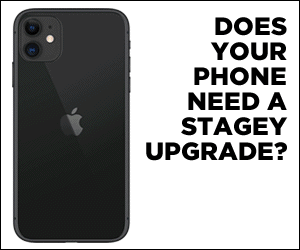If your house was on fire and you could only save one thing, what would it be? There used to only be one answer – the photo album. In it every family holiday, birthday and wedding would be meticulously kept; blurry stolen moments and formal portraits would be the only way to travel back in time. In the last ten years, life has transformed and now almost everything is backed up to the cloud. Would you really want to save those 100 selfies you took before going out last weekend, all them of eerily similar as you tried to get the ultimate angle? Would you really miss the myriad of food pictures? Even the one you took at Nando's last Sunday when you were hungover? In this digital age we have more evidence of our lives than ever, but it all feels a lot less significant.
Proudly analogue in our online world, MOOP celebrates the most evocative mementos of our life.
The Museum of Ordinary People (MOOP) is a pop-up museum, running for one week only, as part of The Spire’s secret Fringe programme. Despite only opening this week, they have already been nominated for the Brighton Fringe Visual Arts Award. Proudly analogue in our online world, MOOP celebrates the most evocative mementos of our life. Nine participants have volunteered to showcase a part of their lives by presenting everyday objects which once belonged to someone else. Short, insightful captions give even the most mundane objects meaning. There are bank letters which reflect the entire banking career of a man, as well as the financial industry he worked in. Elsewhere are photographs of a man living life to the full until his life is sadly cut short. Plenty of the exhibits are tactile, some inviting you in to open drawers and others requesting you leave notes. Particularly emotional are the diaries of Mary Booth, discovered at a car boot sale. You can listen in on headphones to a reading of extracts and hear about when she went to New York, the latest in her love life and when she begins to notice she’s unwell. The collection is presented by Clair Morrow who found that her own struggle with MS poignantly paralleled in the pages of Mary Booth’s handwriting. Other exhibits explore issues of identity and memory; you’re led into wondering whether you can truly understand a person from the artifacts they leave behind. After all, each of us withhold a great deal even from our most intimate diaries and records.
The museum was co-founded by Jolie Booth and Lucy Malone, both artists who discovered an emotive connection through ordinary objects. For Booth, it was stumbling upon the left behind belongings of Brightonian Anne Clarke, who helped set up Infinity Foods and shape the Brighton we know today. For Malone, it was when she decided to create an archive of her mother’s artistic practice after she passed away. She felt that 'there were so many parallels between [Jolie and my] work, we were both using documents to tell a story, and we realised there was a personal connection.'
But why create a museum out of these seemingly innocent objects? Jolie says: 'People really appreciate things being more interactive, and people want to be involved. Real people and real lives are the silences in history, the blank spots.' It’s true that in many mainstream museums you will mostly see the art, jewellery and relics of Kings, Queens and the aristocracy, later collected and curated by rich and well connected. Stories of ordinary people are often lost, having slipped through the cracks.
There is also space for local organisations to show objects of importance. One such partner is PACT, a charity that helps hundreds of families every year on their journey to adoption. After adopting their child, one family decided to use the same Ariel laundry tablets that had been used at the child’s foster family. It became their family smell - another small moment which could easily be missed and ignored.
Another MOOP partner is Miss Represented, a collective of artists, support workers and young women aged between 13-23, supported by Brighton Dome. On Friday June 1st, MOOP will join with Miss Represented to host a conversation about the need to create a space for unheard voices in arts and culture, followed by the Miss Represented ladies taking to the stage to share their own creative experiences and revelations. Alongside this event, they have an interactive exhibit in the museum where visitors are encouraged to anonymously share a worry by writing it on a square of wallpaper and perhaps then write advice and support on someone else’s worry. Bex, who works closely with the young women, agreed that the concept of a problem shared being a problem halved was part of the inspiration behind the project. Allowing visitors to publicly voice their deepest concerns, all with the safety of anonymity, can lead to real peace of mind and there is a sense of solidarity that other people also have worries and concerns that may be concealed behind smiles.
We live in times where the fear of missing out drives us all towards more extreme, expensive and extraordinary experiences. The Museum of Ordinary People helps us to take a step away from this ever increasing pressure to reveal that some of the most important encounters are right in front of our eyes.










